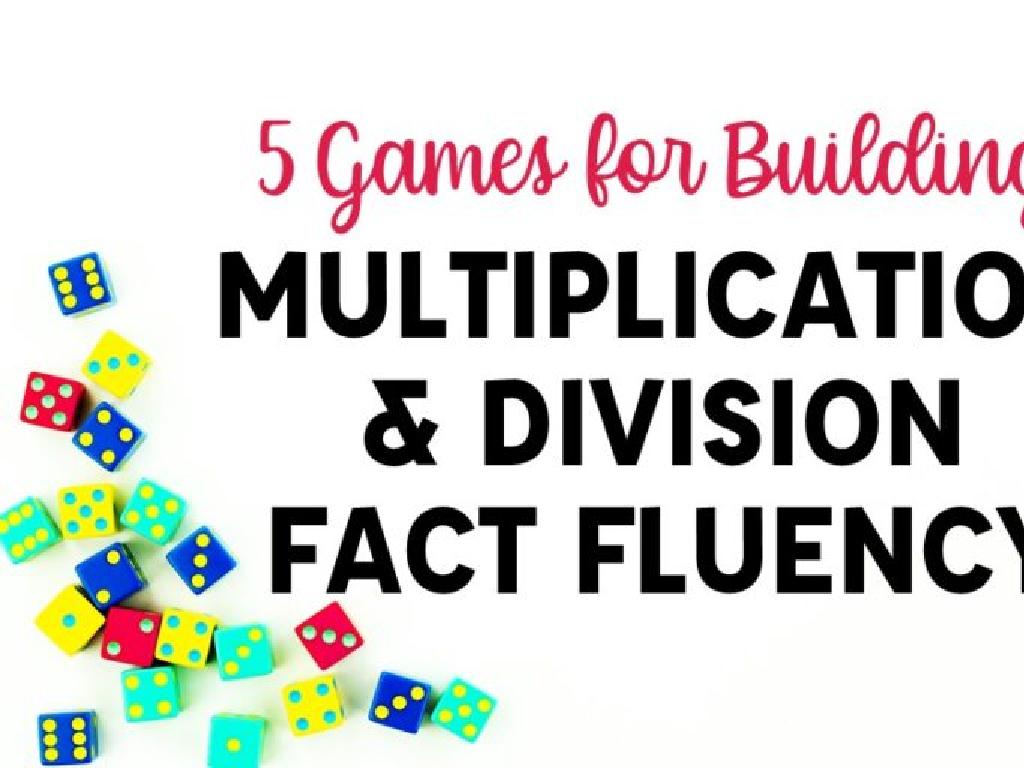Moss And Fern Life Cycles
Subject: Science
Grade: Seventh grade
Topic: Plant Reproduction
Please LOG IN to download the presentation. Access is available to registered users only.
View More Content
Plant Reproduction: Mosses and Ferns
– How do plants reproduce?
– Types of plant reproduction
– Sexual and asexual reproduction
– Exploring moss life cycles
– Mosses use spores, not seeds
– Understanding fern life cycles
– Ferns have a two-stage life cycle
|
This slide introduces the concept of plant reproduction, which is essential for the survival and propagation of plant species. Begin by discussing the general ways in which plants reproduce, highlighting both sexual and asexual methods. Explain that while many plants reproduce using seeds, mosses and ferns have unique life cycles that do not rely on seeds. Mosses reproduce using spores that are carried by the wind, allowing them to colonize new areas. Ferns have a distinct two-stage life cycle that includes both a sporophyte and a gametophyte phase. Emphasize the importance of understanding these life cycles to appreciate the diversity of plant reproductive strategies. Encourage students to think about how these methods of reproduction affect the distribution and abundance of these plants in different environments.
Exploring Moss: Characteristics and Significance
– Defining characteristics of moss
– Small, green, non-flowering plants that grow in clumps.
– Common habitats for mosses
– Thrive in damp, shady locations like forests and wetlands.
– Mosses’ role in ecosystems
– Provide habitat, prevent soil erosion, and contribute to the water cycle.
– Why mosses are important
– They are bioindicators and support biodiversity.
|
This slide introduces students to mosses, a key component of many ecosystems. Mosses are small, soft plants that are typically green and do not have flowers. They often grow in dense green clumps or mats in damp or shady locations. Mosses play a crucial role in their ecosystems by providing habitat for insects and small animals, preventing soil erosion, and contributing to the water cycle through their water retention abilities. Additionally, mosses are important bioindicators, meaning their presence and health can indicate the health of the ecosystem. Understanding the importance of mosses helps students appreciate the complexity and interdependence of ecosystem components.
Moss Life Cycle: Understanding Reproduction
– Explore stages of moss life cycle
– Mosses have a two-part life cycle: gametophyte (green, leafy) and sporophyte (spore-producing).
– Learn about role of spores
– Spores are for reproduction, dispersed by wind to grow new moss.
– Differentiate gametophytes and sporophytes
– Gametophytes are the dominant, photosynthetic phase; sporophytes are attached and dependent on gametophytes.
– Importance of each stage in reproduction
|
This slide introduces the complex life cycle of mosses, which is a great example of alternation of generations in plants. Students should understand that mosses have two distinct stages: the gametophyte stage, which is what we typically recognize as moss, and the sporophyte stage, which grows from the gametophyte and releases spores. Spores play a crucial role in reproduction, as they can travel long distances to start new moss colonies. It’s important for students to differentiate between the two stages, recognizing that gametophytes are the long-lived, photosynthetic part of the cycle, while sporophytes are temporary and rely on the gametophytes for nutrients. Emphasize the importance of each stage in the continuation of the moss species. Activities can include observing moss under a microscope or identifying moss stages in a local ecosystem.
Exploring Ferns: Diversity and Significance
– Defining characteristics of ferns
– Ferns have roots, stems, and leaves but no flowers or seeds.
– Diversity among fern species
– Over 10,000 species with various sizes and forms.
– Ferns in natural habitats
– Thrive in moist, shady environments.
– Ferns’ role in human culture
– Used in gardens, medicine, and as bioindicators.
|
This slide introduces students to ferns, a group of non-flowering plants that reproduce via spores. Key characteristics include having roots, stems, and leaves, but lacking flowers and seeds. With over 10,000 species, ferns exhibit a wide range of diversity in size, shape, and habitat preference, often found in moist and shady areas. They also have a place in human culture, being used for ornamental purposes, in traditional medicine, and as indicators of environmental quality. Encourage students to think about where they might have seen ferns in their own experiences and to consider the importance of biodiversity within plant species.
Exploring the Fern Life Cycle
– Stages of the fern life cycle
– Ferns cycle includes spore, gametophyte, and sporophyte stages.
– From spores to sporophytes
– Spores germinate to form gametophytes, which then produce sporophytes.
– Understanding fern gametophytes
– Gametophytes are the sexual phase, producing eggs and sperm.
– Ferns’ asexual reproduction
– Ferns can reproduce without fertilization, through spores.
|
This slide provides an overview of the fern life cycle, which is a complex process involving multiple stages. The cycle begins with spores that develop into gametophytes, the sexual phase of the plant. Gametophytes produce eggs and sperm, which upon fertilization grow into sporophytes, the asexual phase. Sporophytes then produce spores, completing the cycle. It’s important to highlight the difference between gametophytes and sporophytes in terms of their roles in reproduction. Emphasize that unlike many plants, ferns do not produce flowers or seeds. Instead, they reproduce via spores, which can be found on the underside of their fronds. This method of reproduction allows for genetic diversity and adaptation to the environment.
Comparing Moss and Fern Life Cycles
– Similarities in life cycles
– Both have alternation of generations; sporophyte and gametophyte stages.
– Differences in reproduction
– Mosses rely on water for fertilization, while ferns have more complex reproduction.
– Adaptations for survival
– Mosses have rhizoids for anchorage; ferns have roots, stems, and leaves.
– Environmental impacts on cycles
– Different habitats influence their reproductive strategies and structures.
|
This slide aims to compare and contrast the life cycles of mosses and ferns, highlighting both similarities and differences. Students should understand the concept of alternation of generations, which is common to both plants, involving a switch between haploid gametophyte and diploid sporophyte stages. Emphasize the dependency of mosses on water for sperm mobility, contrasting with the more advanced reproductive systems of ferns that include sori and spores that can be dispersed by wind. Discuss how adaptations like rhizoids in mosses and true roots in ferns allow these plants to survive in various environments. Finally, explore how these adaptations affect their life cycles and reproductive success in different habitats. Encourage students to think about how these plants have evolved to meet the challenges of their environments.
Class Activity: Exploring Moss and Fern Life Cycles
– Examine live moss and fern samples
– Identify life cycle stages
– Look for gametophyte and sporophyte stages
– Discuss observations
– Record findings in science journals
– Note the differences and similarities
|
This hands-on activity is designed to give students a practical understanding of the life cycles of mosses and ferns. Provide students with live samples of moss and ferns, and guide them to observe the physical characteristics of each plant. Help them identify the gametophyte and sporophyte stages in the life cycles. Encourage students to discuss their observations in small groups and then share their findings with the class to foster a collaborative learning environment. Have them record their observations and any conclusions in their science journals, which can be used for further study and reflection. Possible activities include drawing the life cycle stages they observe, labeling parts of the plants, or comparing the life cycles of moss and ferns to other plants they have studied.
Recap: Moss and Fern Life Cycles
– Review moss and fern cycles
– Mosses: non-vascular, spores for reproduction. Ferns: vascular, have fronds.
– Significance in ecosystems
– They prevent soil erosion and support biodiversity.
– Encourage class questions
– Open floor for discussion
|
As we conclude, recap the key stages of moss and fern life cycles, emphasizing the differences between them. Mosses are non-vascular plants that reproduce using spores, while ferns are vascular and have distinct fronds and also reproduce via spores. Highlight the ecological importance of these plants, such as their role in preventing soil erosion and supporting biodiversity. Encourage students to ask any lingering questions they might have and facilitate an open discussion to ensure a clear understanding of the topic. This will help reinforce the material and provide an opportunity for students to engage with the subject matter actively.
Homework: Local Moss and Fern Research
– Research a local moss or fern
– Prepare a report on its life cycle
– Focus on stages: spores, gametophyte, sporophyte
– Describe its natural habitat
– Where does it grow? What conditions does it prefer?
– Include visuals: drawings or photos
– Visual aids enhance understanding and retention
|
This homework assignment is designed to deepen students’ understanding of plant reproduction, specifically focusing on mosses and ferns. Students are tasked with selecting a local species, which will help them connect with their environment and see real-life examples of the concepts learned in class. The report should detail the life cycle stages of the chosen plant, including the alternation of generations between the gametophyte and sporophyte phases. Additionally, students should describe the habitat where the plant thrives, considering factors like moisture, light, and soil type. Encouraging the inclusion of drawings or photos will help students engage creatively with the assignment and can aid in their presentations to the class. This activity will also prepare them for understanding biodiversity and ecosystems.






